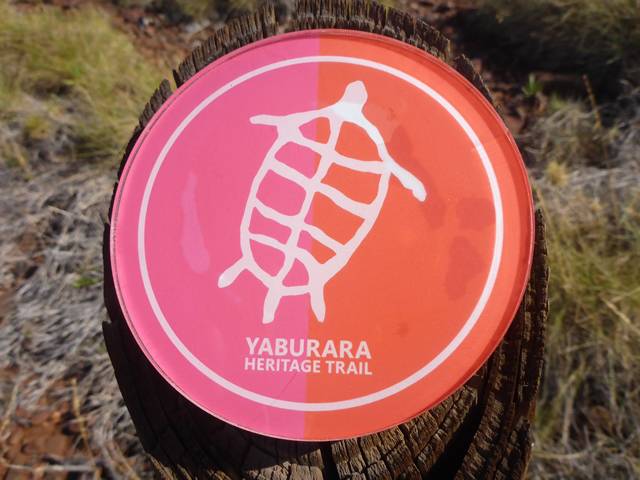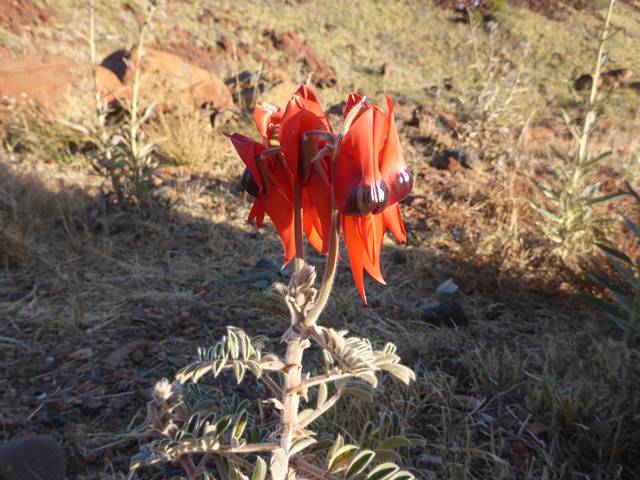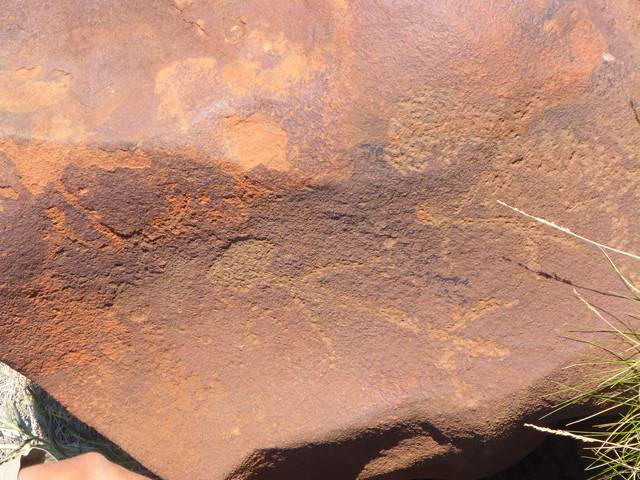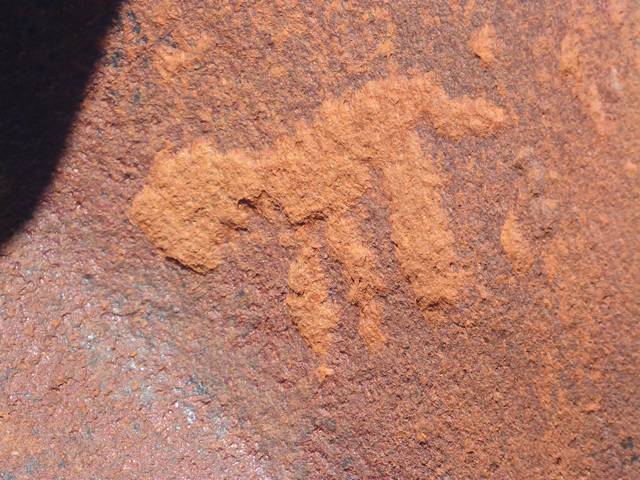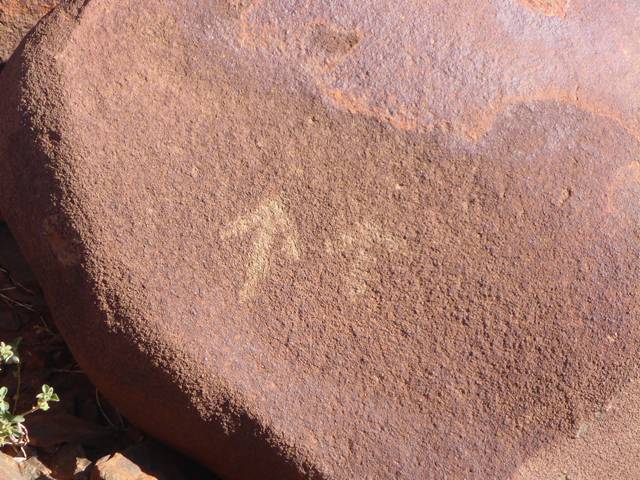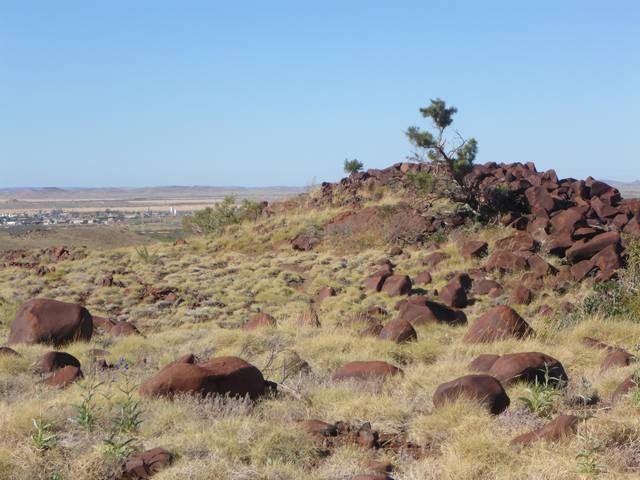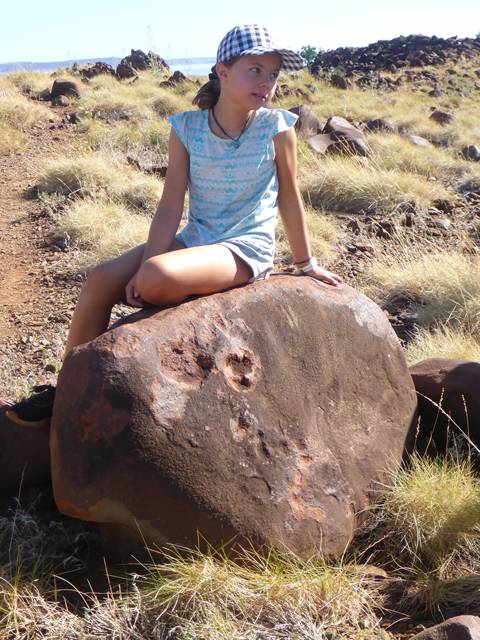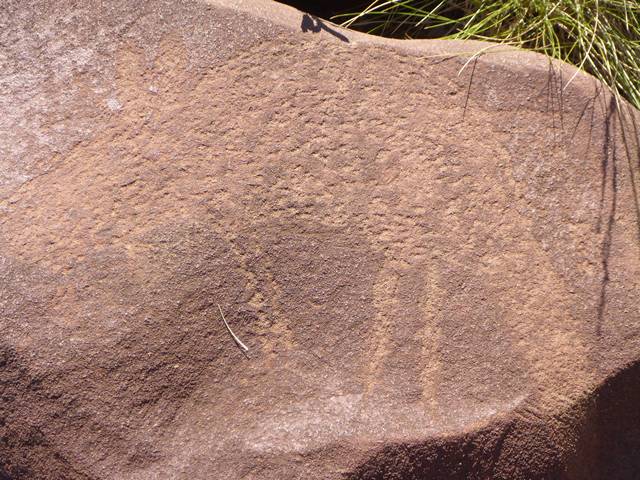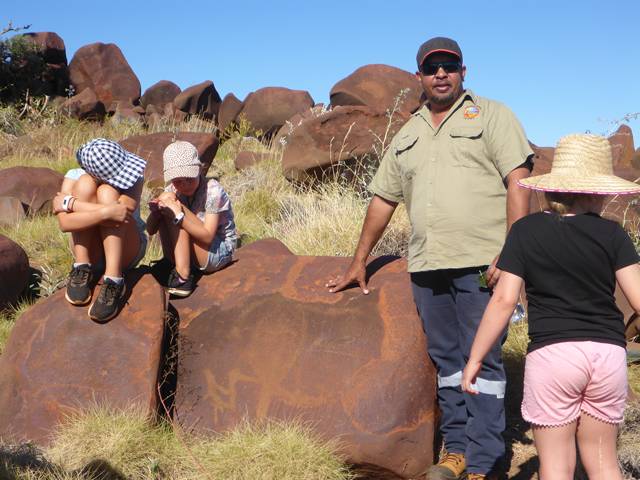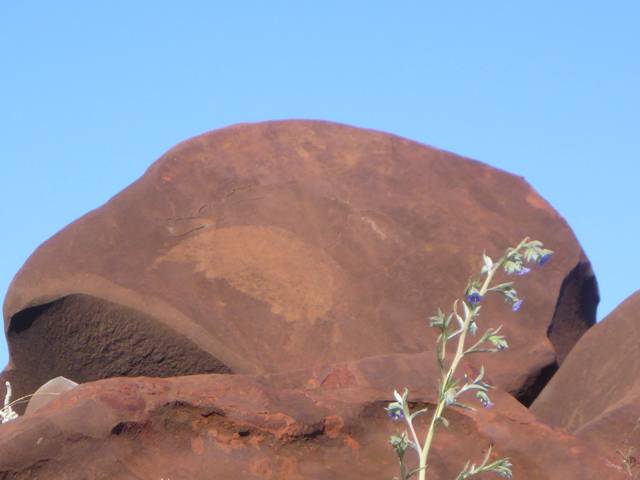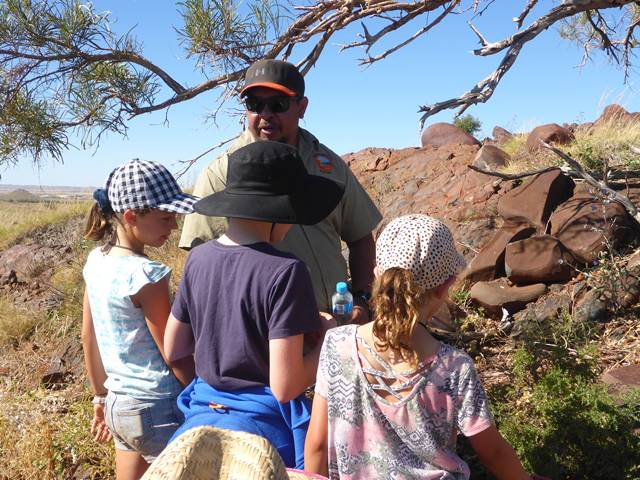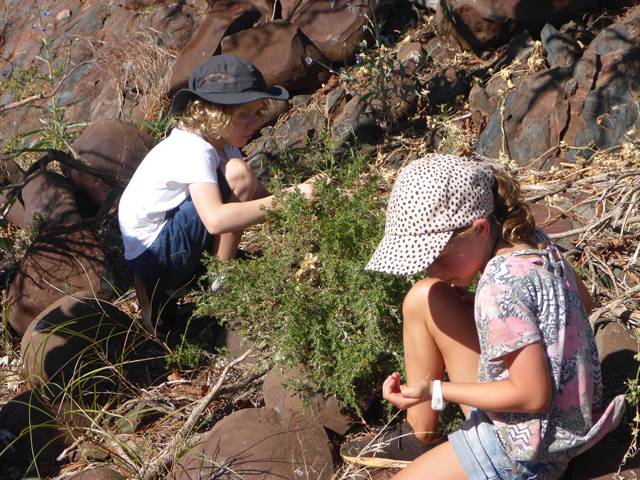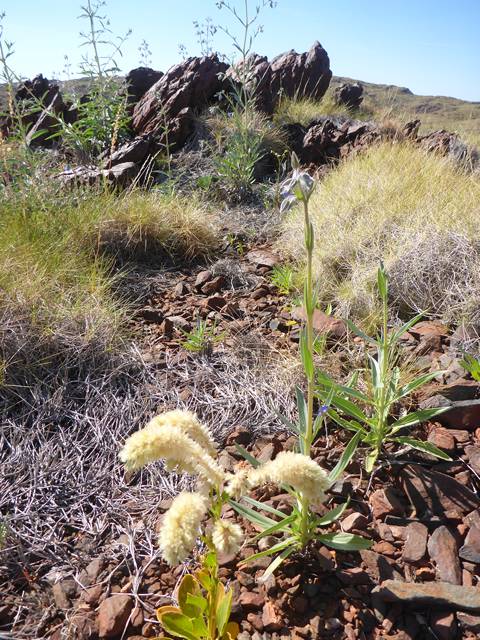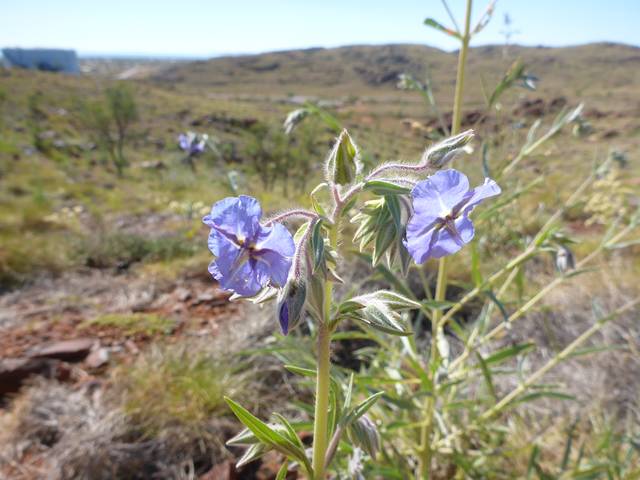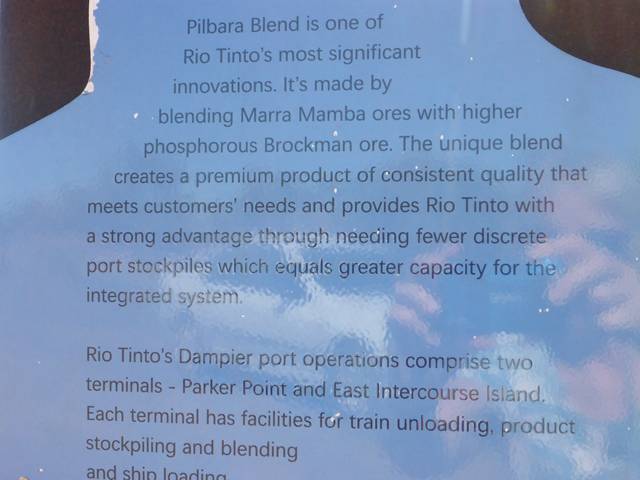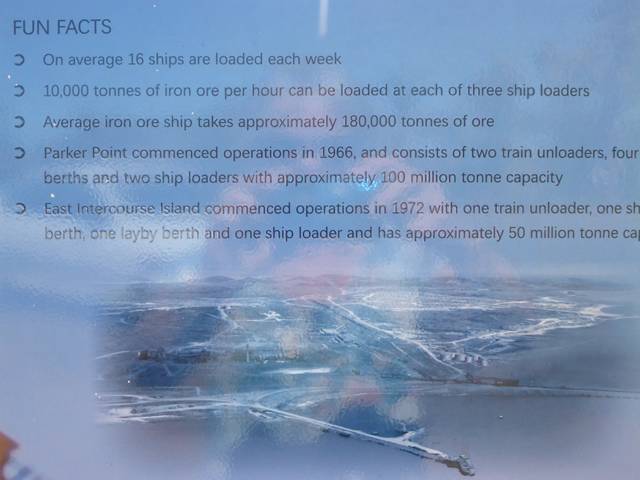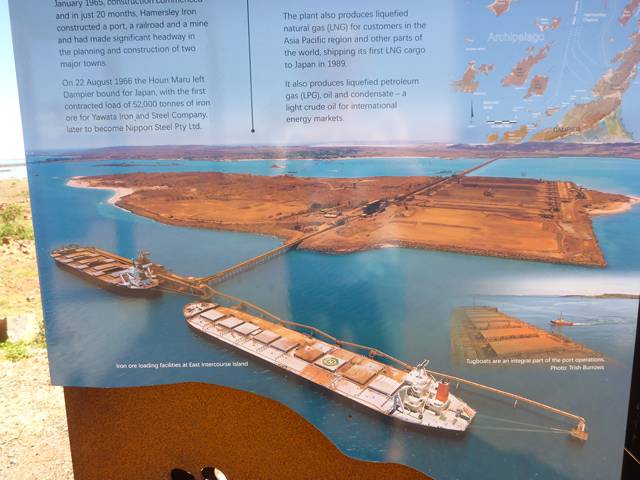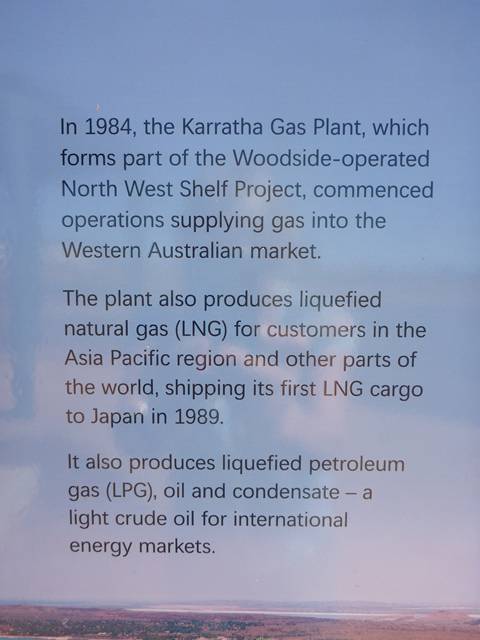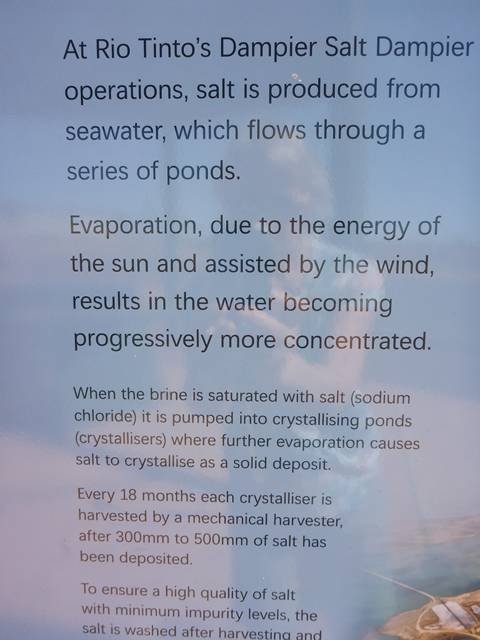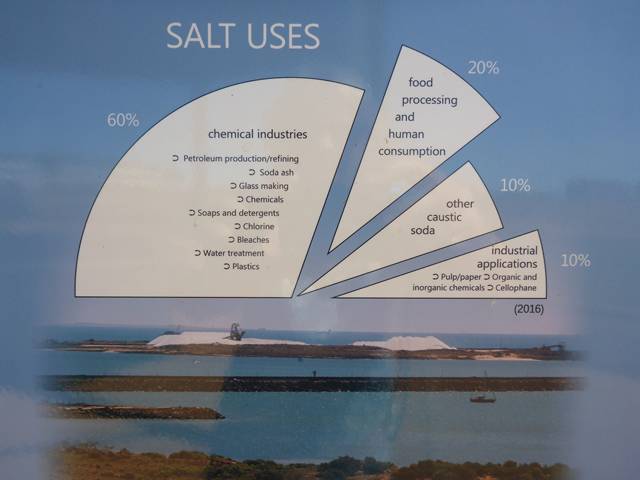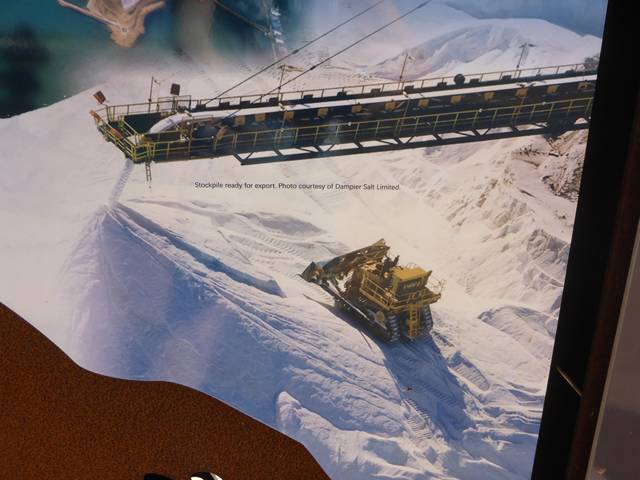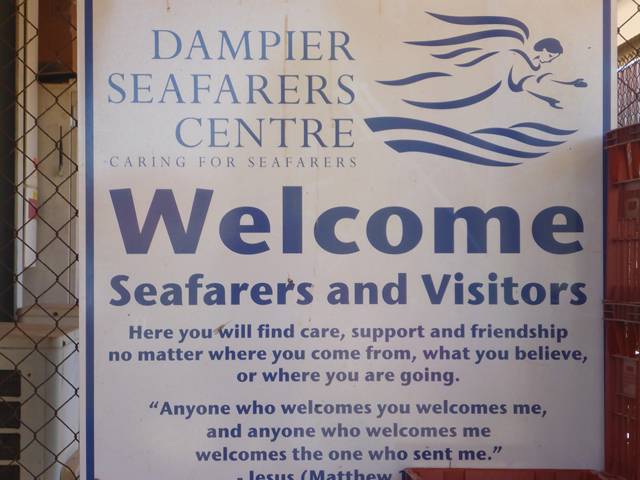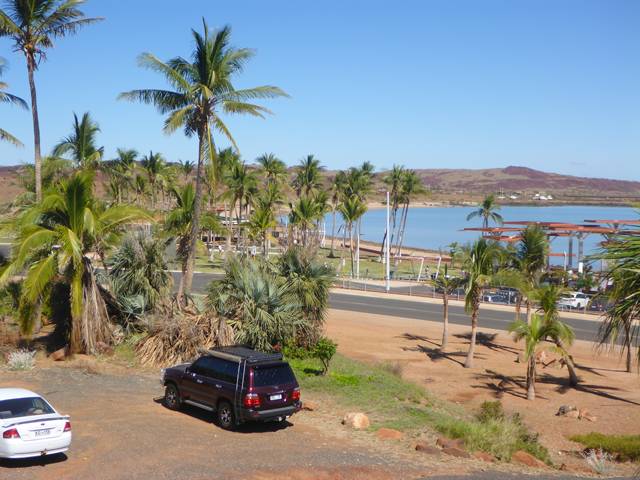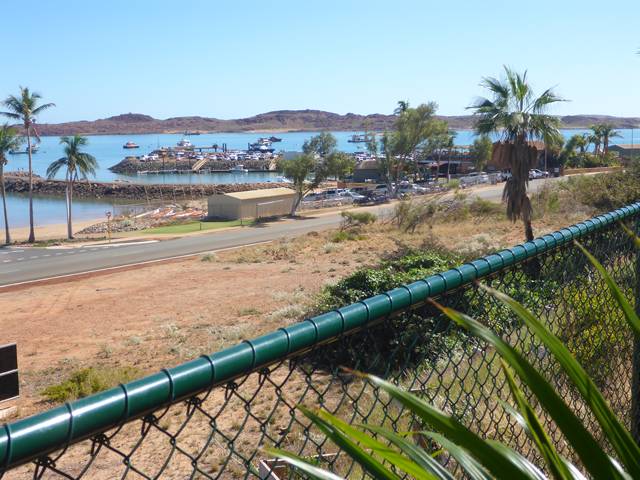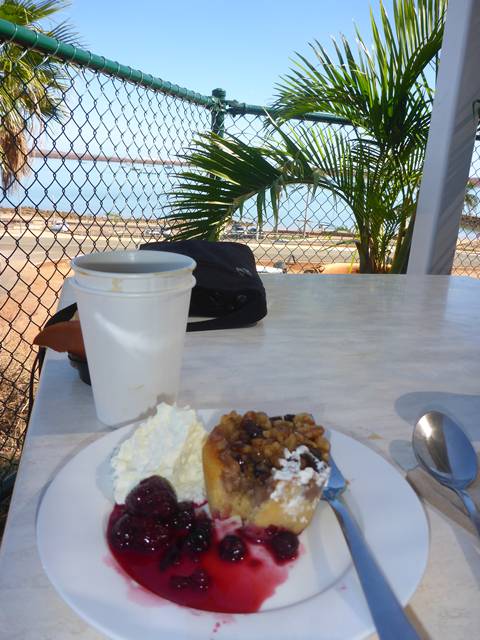Aus 2020 Clinton Walker and the Ngurrangga Artworks

|
Clinton Walker and the Ngurrangga Artworks 22:59.01S 114:36.47E We arrived back up at the lookout behind the I-Site and looking down on the town of Karratha and beyond, early and enthusiastic the next morning. The other popular place to view these ancient pictographs is in nearby Murujuga National Park but that place was closed at the time of our visit because improvements are being carried out to protect the objects and area with boardwalks, Clinton explained. He was happy to be showing us the little known ones which are numerous in the hills around and are protected by their obscurity. Just before our small group followed him onto the narrow rough track a lady turned up in a four by four and Clinton gave her a 1.5 litre plastic bottle of a pink liquid. He had made up the medicine the night before when she told him the problems her daughter was suffering with her eczema. He pointed to the tree from which he had taken a slice of the bark and made the infusion. He told the lady the liquid was for external and internal use and then told us about medicines known to his people that actually destroys cancer cells. Sick folk in his mob have been for a western diagnosis and then treated the illness with their own medicine and when they have returned for further treatment the cancer has disappeared. Clinton is cousin to Walter McGuire with whom we had spent a morning in Perth if you remember, and he is another wise man who knows all about the plant and medicinal values of the local flora. More importantly to the lovely children in the group, two girls of which already knew lots about aborigines, were the flowers and berries that were sweets to the aboriginal children. The extraordinary and luscious red flowers are Sturt’s Desert Pea and by squeezing the deep purple centres Clinton revealed the inner part of the flower where the sweet nectar can be found. On low green bushes he pointed out the ripened red berries and he encouraged the children to suck them and spit out the pips so the plant would spread; as you can imagine the children had no problem with this. You can see from the photos how the children grouped around him sensing his warm, friendly and interesting personality. Even his wife will not let him have a boat in which to go fishing because it might sink under him! Surrounded by 360 degree views over the coast and countryside we progressed uphill towards the rock pictures carved out of the dolomite rock and thought to be between 40 and 80 thousand years old. Clinton is standing beside a carved record of a family and on a separate photo you can see their dog, kept for protection, which helps to give a rough idea of the age of the picture. The dog is a Tasmanian Tiger; they have striped bottoms and are thought to be extinct, although they used to roam all over the Continent and were the first domestic dog of the Aborigines before European breeds were introduced. Trying to keep in order, the rock showing what looks like two arrows pointing upwards is in fact an emu walking downwards and the next picture with what appears to be two feet with a long groove in between is a kangaroo in transit. Then there is the picture depicting a carnivorous kangaroo that used to walk on all fours and has long been extinct. After the picture of Clinton with a group of children and in the distance with blue sky and the blue flower is an echidna, like the one we saw in the wild in Tasmania, a big hedgehog like creature with porcupine-like spines. There was a bounty of durable recordings of past lives out there in what looked like a hostile area but was in fact home for millennia to the most ancient race of humans in the world and how good it is that the knowledge of the past is being spread and preserved right now and for the future. A number of us lingered around Clinton back in the car park, not really wanting this special experience to end and realising that he had given much more of his time than we had paid for. The topic of Rio Tinto and their policies is never far from any conversation in this region and the mood in our group was one of disgust at their arrogance. I don’t bring up the subject but people seem to be harbouring pent up frustration that this one company has little or no regard for the health and welfare of the people they affect and no regard for what is held as sacred to the aborigines and of immense value to the history of man. Eventually we made our way towards Dampier and found a place that would be a very pleasant stop over for a yacht travelling west across the Timor Sea. A vast, safe estuary revealed a number of yachts on moorings and of course one can ‘clear out’ from Aussie at this port, by arrangement with the Border Force. Rio Tinto built the town as a closed town for the employees of their Mount Tom Price mining project at the west end of the Karijini National Park, but it is slowly opening up for tourism as a seaside resort too. We found a welcome at the popular Dampier Seafarers Centre for a snack lunch with the Spinifex Pigeon for company. I wondered what this place would be like in years to come once Rio has left the continent. A vacuum of valuable facilities with potential for a variety of uses, both civil and possibly military.
|
